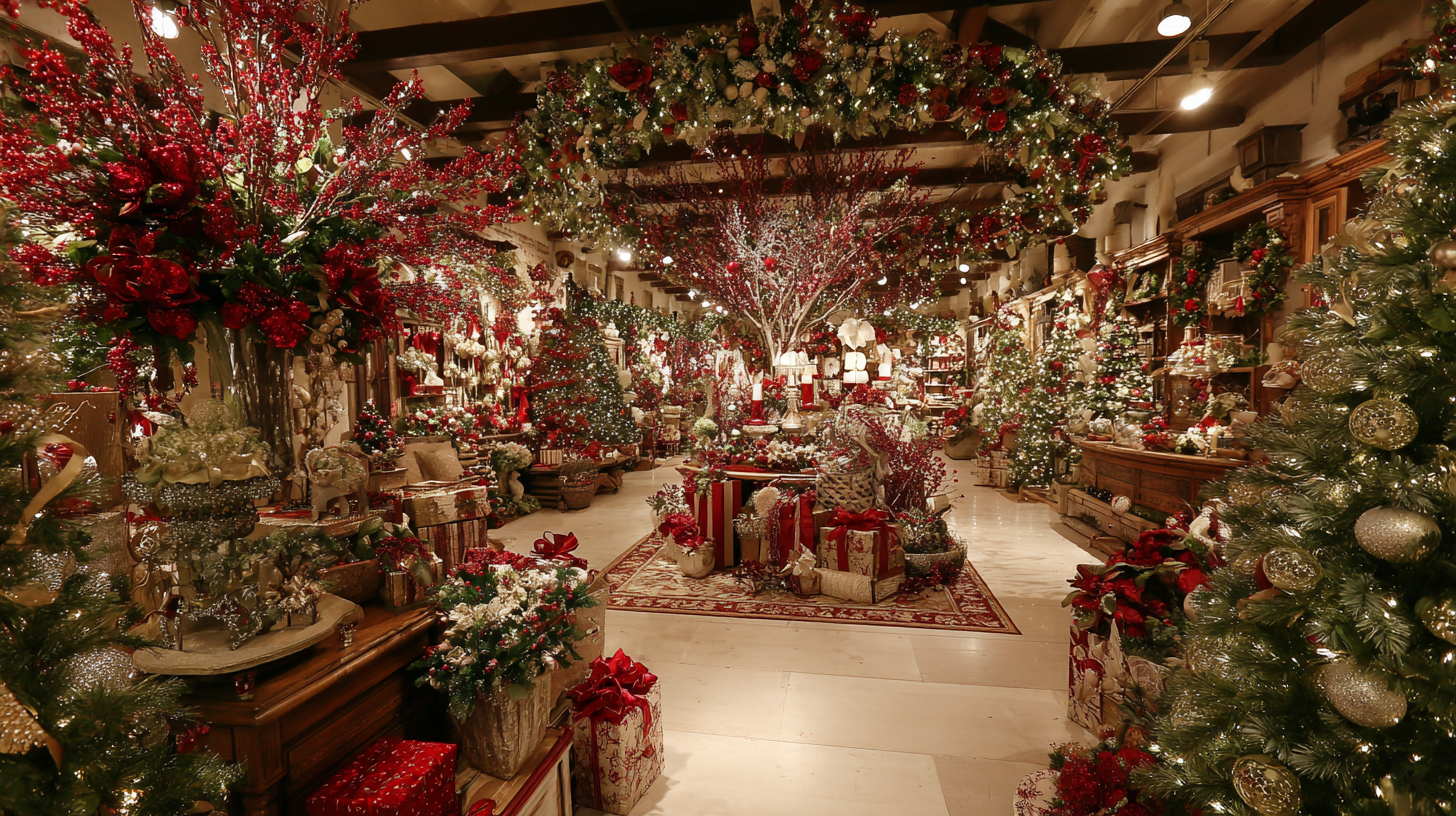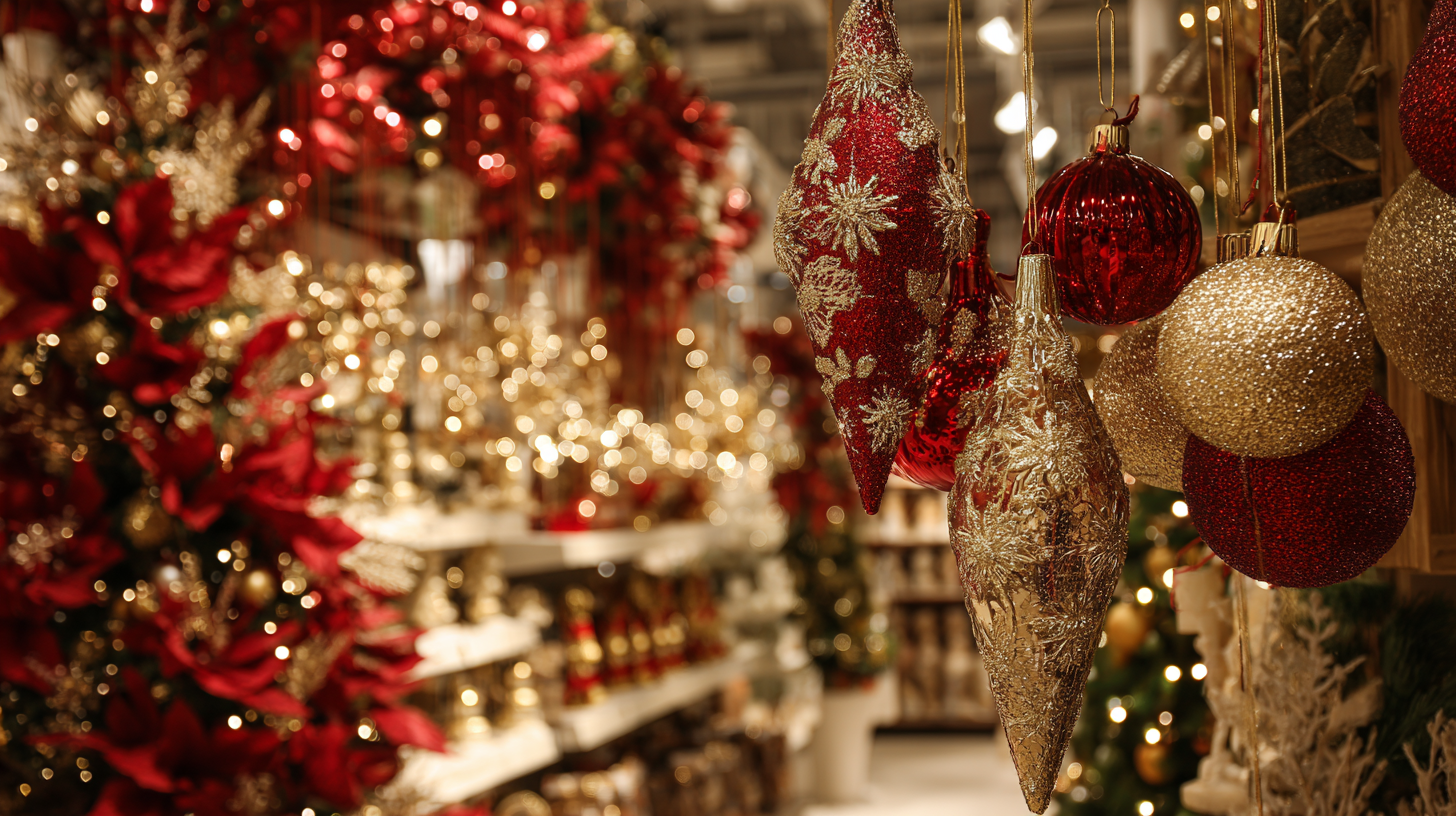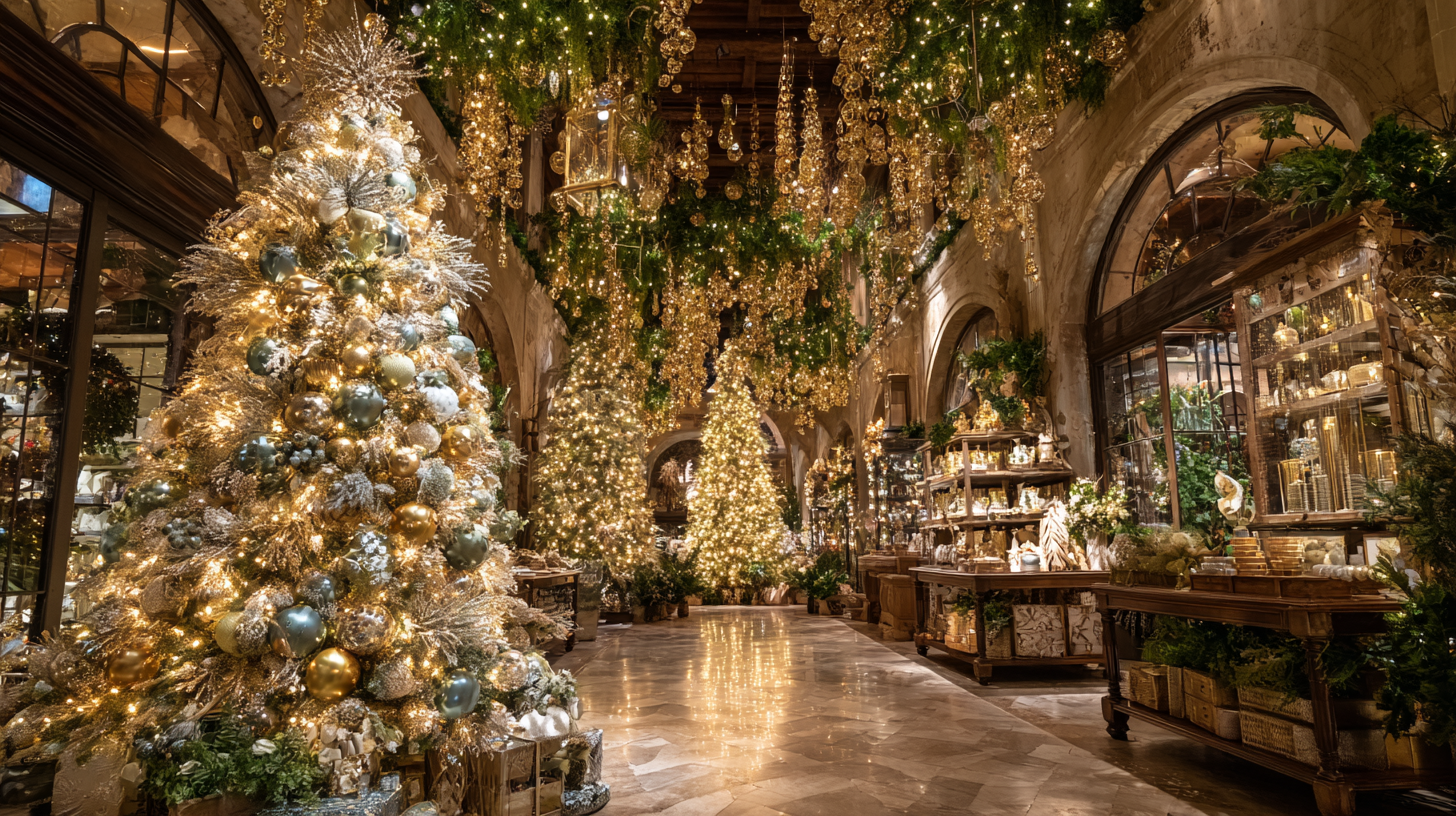As the holiday season approaches, global buyers are continually seeking the latest trends in holiday decorations to enhance their festive experiences. According to the National Retail Federation, consumer spending on holiday decorations is projected to reach an all-time high this year, with an estimated increase of 5% from the previous year. This surge highlights the growing importance of innovative and eye-catching holiday decor in creating memorable celebrations.

From sustainable materials to high-tech installations, the evolution of holiday decorations reflects broader consumer preferences for personalization and environmental responsibility. With the integration of digital elements, such as augmented reality and smart home technology, the modern approach to holiday decorations is not only creative but also interactive, enabling shoppers to curate a unique ambiance that resonates with their individual styles.
As we explore the latest trends, it is essential for global buyers to stay informed and adapt to these dynamic changes in the holiday decorations landscape.
The modern holiday decorating landscape is experiencing a significant transformation, driven largely by technological advancements. According to a 2023 report from the National Retail Federation, approximately 40% of consumers are integrating digital displays into their holiday setups. These innovative digital decorations include everything from programmable LED lights to augmented reality experiences that breathe new life into traditional displays. As more households opt for automation and interactivity, retailers are adapting their product offerings to cater to this evolving consumer preference.

Additionally, the trend of embracing smart home technology in holiday decorations is gaining momentum. A survey conducted by TechHive in early 2023 revealed that 52% of respondents are likely to purchase smart decorations that can be controlled via mobile apps or voice commands. This shift towards interconnected systems not only enhances the festive atmosphere but also offers practicality, allowing users to customize their displays effortlessly. As technology continues to shape our holiday experiences, it’s clear that digital decor is here to stay, offering endless possibilities for creativity and personalization.
As the holiday season approaches, the shift toward sustainable and eco-friendly decorations is becoming increasingly prominent among global consumers. With a growing awareness of environmental issues, many are opting for decorations that not only enhance their festive spirit but also align with their sustainable values. This trend sees a rise in the use of materials such as organic cotton, bamboo, and recycled items, transforming traditional holiday decor into stylish yet environmentally conscious choices.
The market for eco-friendly decorations is booming, driven by consumer demand for sustainable products. The global sheep wool market, expected to reach $16.59 billion by 2025, exemplifies this shift, as consumers seek natural and biodegradable materials for their holiday decorations. Similarly, the ceramic dinnerware market is projected to expand significantly, showcasing an increasing preference for durable and sustainable home goods. As crafters and designers embrace natural fibers like jute to create unique decorative items, the fashion industry is also recognizing the versatility of sustainable materials, integrating them into casual wear. This holistic approach to sustainability is reshaping holiday traditions, reflecting a commitment to preserving the planet while celebrating the season.
| Trend | Description | Materials Used | Popularity (% Global Interest) |
|---|---|---|---|
| Natural Elements | Incorporating pine cones, berries, and branches into decorations. | Wood, Pine, Dried Fruits | 65% |
| Handmade Crafts | Focus on custom, artisan-made decorations. | Recycled Materials, Clay, Fabric | 50% |
| LED and Solar Lighting | Energy-efficient lighting for both indoor and outdoor use. | LEDs, Solar Panels | 70% |
| Upcycled Decor | Using old items repurposed into festive décor. | Glass, Paper, Wood | 55% |
| Biodegradable Ornaments | Decorations that naturally decompose after use. | Cornstarch, Paper Pulp | 40% |
In today’s global marketplace, holiday decorations are increasingly reflecting a beautiful amalgamation of diverse cultural traditions. The concept of cultural fusion not only enhances the aesthetic appeal of festive styling but also promotes a deeper understanding and appreciation of various customs. From the vibrant colors of Diwali to the snowy white elegance of Christmas, decorations are being customized to blend unique elements from around the world, creating a harmonious celebration that transcends borders.
These shared decorations often incorporate symbols and motifs that hold significance across cultures, such as lanterns, wreaths, and ornaments, each telling a story of its heritage. For instance, a holiday table setting might include Kwanzaa kinara alongside Christmas candles, merging the richness of African American traditions with European festive practices. This growing trend fosters inclusivity, allowing families to celebrate their diverse backgrounds while embracing a unified festive spirit. As buyers navigate through this evolving landscape, the emphasis is on sourcing decor that reflects their identity while celebrating the beauty of cultural diversity.

Personalization has become a key trend in holiday decorations, allowing individuals to create unique and memorable experiences that reflect their personal style and stories. In a world where mass-produced items dominate the market, customizable decor provides a refreshing alternative that speaks to personal identity. From tailored ornaments that feature family names or special dates to bespoke wreaths made from favorite seasonal foliage, these personalized elements make every celebration distinctive and meaningful.
Moreover, technology plays a significant role in enhancing the personalization trend. Many buyers are now turning to online platforms that offer design tools, allowing them to create their own holiday decor from the comfort of their homes. Virtual reality features are also emerging, letting customers visualize their customized creations in a realistic setting before making a purchase. This level of involvement not only deepens the connection to the holiday season but also ensures that the decorations embody treasured memories, cultural traditions, and individual preferences, making each celebration truly one-of-a-kind.
The holiday season brings a vibrant array of decoration styles, with minimalism and maximalism leading the charge in current trends. Minimalism focuses on understated elegance, opting for simple, clean lines and a limited color palette. According to the 2023 Home Decor Trends Report, about 35% of consumers prefer minimalistic designs during the holidays, reflecting a desire for clarity and tranquility in their spaces as the world beyond feels increasingly chaotic. This aesthetic is often complemented by natural materials and soft lighting, fostering a serene atmosphere that promotes mindfulness and relaxation.
Conversely, maximalism celebrates abundance and eclecticism, inviting layers of texture, color, and ornamentation. A recent survey by the Decorative Arts Society revealed that approximately 28% of buyers are embracing maximalist holiday decor, drawn to bold statements and the joy of nostalgia. This trend encourages mixing patterns and styles, creating a visually stimulating environment that sparks conversation and binds family traditions. With social media amplifying visual inspiration, maximalist decorations often feature whimsical elements, such as vibrant ornaments and layered textiles, making the home feel alive and festive. Ultimately, the choice between minimalism and maximalism reflects personal aesthetic preferences, shaping the way individuals celebrate the season.
